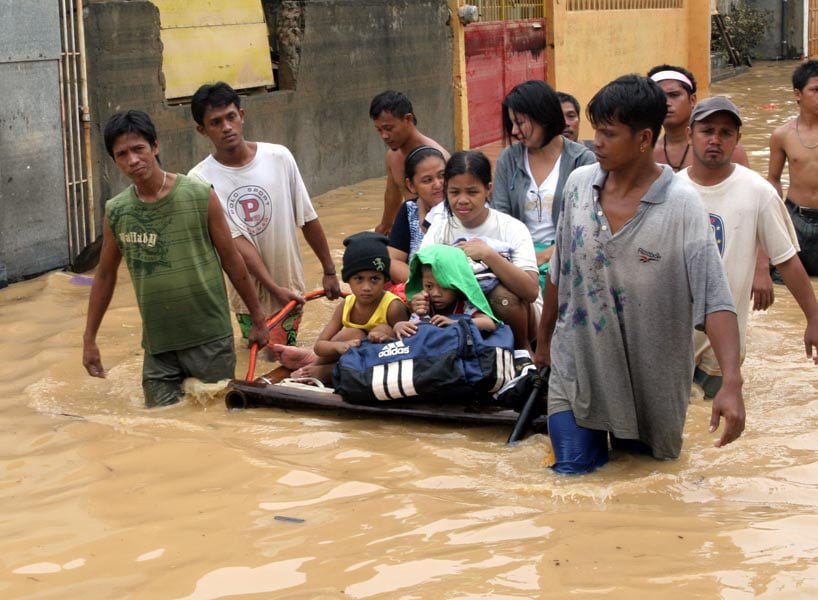Up to 30,000 people have so far been evacuated in northern Pangasinan province - which is nearly all flooded - but many more remained on rooftops, after continued rains added to the water released from the dams transformed the main highways into virtual rapids, said the provincial spokesman, Butch Velasco.
"Out of the 43 towns here, 30 are already under water. Waters are [higher than] people; we are also receiving text messages that people are on rooftops and awaiting our rescue," Velasco said, adding that rescuers fanned out at dawn to reach the heavily affected areas, but were hampered by continuing rain.
"We have already asked for help from other agencies, the Red Cross, the military and navy rescuers,” he said.
Chief Superintendent Ramon Gatan, the regional police chief for the north, said Pangasinan had been isolated, with the highways heavily flooded and impassable, even to big vehicles.
Police said the number of casualties in the mountainous province of Benguet alone had risen to 95, but the toll was expected to rise as the crisis deepened.
Stranded
The government was forced to release water from at least two major dams in the towns of San Roque in Pangasinan, and Pantabangan in northern Nueva Ecija Province because they were in danger of spilling over, or from being destroyed due to water pressure.
The water released, however, prompted river systems that go all the way to Pangasinan and surrounding provinces to overflow their banks, triggering the flooding.
"The situation is very bad. Rain and water overflow from the dams combined and there are a lot of areas now under water," Philippine National Red Cross secretary-general, Gwendolyn Pang, told IRIN.
"People are on top of roofs, and one bridge connecting Pangasinan to [the province of La Union] collapsed. We still can't say how many have been displaced as the water level varies from place to place."
In a town in Pangasinan, a man who identified himself only as Ronnie said he and 50 others were stranded on the roof of their two-storey home.
"We need water, food. Please ask authorities to send helicopters to help us. We have children here," he told a local radio station by telephone before he was cut off.
Parma hits again
Parma made landfall on 3 October in Cagayan province on the island of Luzon as a super-typhoon with gale force winds equivalent to a category 4 hurricane, blowing away roofs and causing heavy flooding that damaged tracts of agricultural land.
It then weakened into a storm and remained nearly stationary over part of the island. Continued heavy rains have also caused deadly landslides that have cut off the popular mountain resort of Baguio city in northern Luzon.
The Philippines National Disaster Coordinating Council (NDCC) said Parma was some 60km north-northwest of Baguio as of early 9 October, but was still bringing heavy rain to several northern provinces.
It said the total death toll from Parma had reached 25, mostly due to landslides, while 39 people were still missing. It has also affected more than one million people in Luzon, of whom about 42,000 are still in evacuation centres.
Parma's fury exacerbated the effects of tropical storm Ketsana, which dumped a month's worth of rain on Manila and surrounding suburbs on 26 September, causing massive flooding and killing nearly 300 people and affecting nearly four million more.
The government has said it has been totally overwhelmed by the crises; the UN issued a flash appeal on 7 October for US$74 million to help some one million people in dire need of immediate assistance amid the twin disasters.
jg/ey/mw
This article was produced by IRIN News while it was part of the United Nations Office for the Coordination of Humanitarian Affairs. Please send queries on copyright or liability to the UN. For more information: https://shop.un.org/rights-permissions





